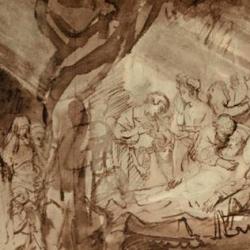In the article mentioned in my last post, Kloos argues that Augustine moves beyond allegorical and figural exegesis in the process of writing the Contra Faustum . Figural exegesis plays into Faustus’s hands: If the Old Testament physically figures spiritual realities, why not dispense entirely with the figurae and embrace the res ?
The category of “witness” or “testimony” does multiple things for Augustine. On the one hand, it is a way of describing the continuing present significance of the Old Testament in the church. If the Old Testament is merely figural, then its use might pass away when the figures are fulfilled. As testimony, the Old Testament witnesses to its own fulfillment in the New Testament.
Further, since Jesus and the apostles testify to the ongoing significance of the Old Testament, there is an intra-canonical witness in both directions. The Old is a continuing witness to its fulfillment in the New, and the New testifies to the continuing value of the Old.
But the testimony offered is not simply textual. It is personal.
Augustine uses the category of witness to explain God’s purposes for the Jews in the Christian era. By maintaining the Old Testament without recognizing the Christ of the New, the Jews serve as an “impartial witness” that supports the testimony of the Old Testament. Besides that, Augustine says that the sufferings of the Jews since their rejection of Christ, sufferings that were threatened by their own Scriptures, and this also testifies to the truth of the Old Testament.
The rites and practices performed by the ancient Jews also served as testimonies. Since God doesn’t need any of the sacrifices or other offerings Israel brought, Augustine concludes that the purpose of the rites must have been didactic. By conforming to the Lord’s ritual ordinances, the Jews became an embodied proclamation, pointing to God as the source of healing and life and to the need for human beings to respond with gratitude. More broadly, the practices of ancient Israel testify to the fact that God is
In sum, Kloos says that Augustine uses “testimony” in four ways: “(1) a means of claiming the present validity of the Old Testament for Catholic Christians; (2) a broad category inclusive of signifying rituals . . . , moral commands . . . , prophecy . . . , and narratives from the history of Israel . . . ; (3) an argument for the present Jewish witness to Christianity; and (4) a means of teaching about divine and human nature in a manner that can easily be understood by the human mind.”











